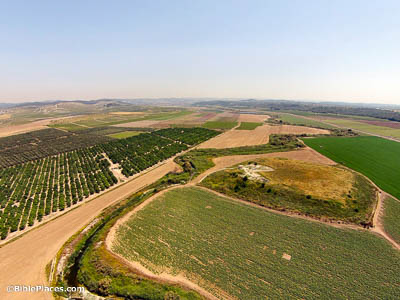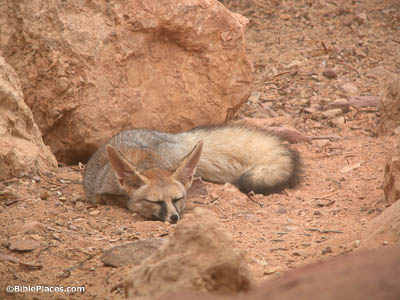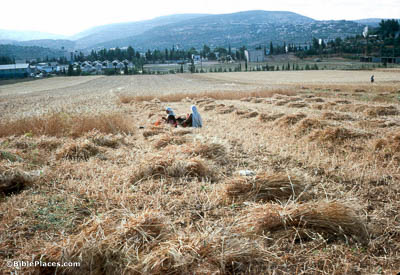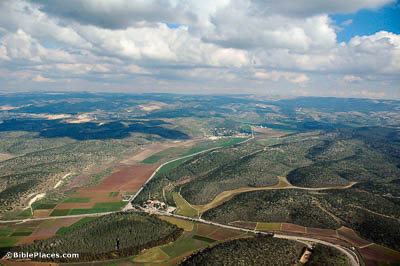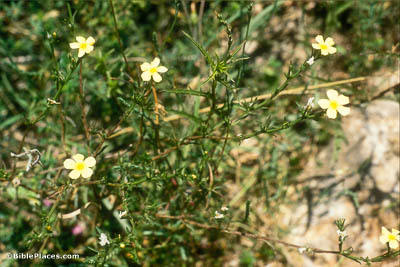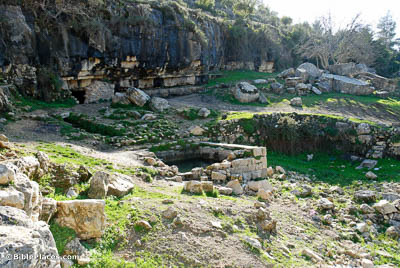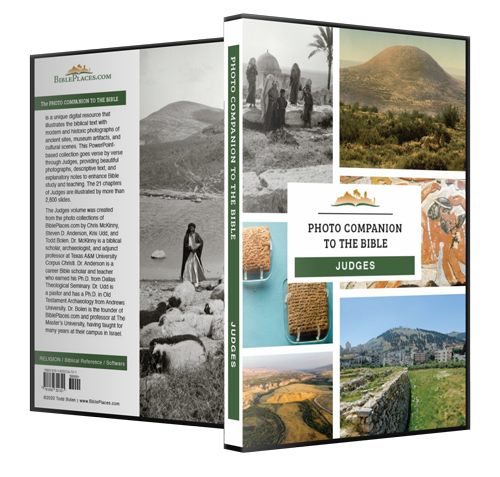And it came about after a while, in the days of wheat harvest, that Samson visited his wife (Judges 15:1).
Samson’s visit would have taken him down the Sorek Valley to Timnah. If he took the easiest way, the distance would have been about 6 miles (10 km). Timnah is the mound in the foreground of this picture, while Zorah is located in the distant hills.
